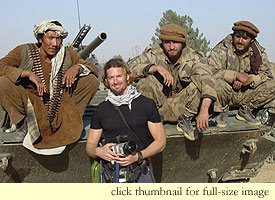
Photo Copyright Kevin Sites
When Yahoo's media group announced last summer their plan to launch media-rich original programming online, digital story-tellers chortled with glee. We rubbed our hands together in keen anticipation of a bright new era for content producers.
Lloyd Braun, the former chief of ABC Entertainment, was the uber-producer behind this ambitious endeavour. With clarion calls blasting, Yahoo's media group announced plans to produce original TV-like programming for the Internet including sitcoms and talk shows. Braun, the newly appointed chief of Yahoo's media group, launched Yahoo's first venture in original programming, "Kevin Sites in the Hot Zone", devoted to the coverage of war and conflict by this exceptionally talented multi-tasking
Duracel Bunny who reports as a one-person team in almost real time from the field.
Yahoo's Kevin Sites in the Hot Zone" Kevin Sites in the Hot Zone" is a model that most of us cross-media producers are dying to replicate...to follow our bliss on great stories, working as what Sites calls " SoJo's", solo journalists, reporting from the field with text, video and photography, within a blog-like context. Last February
Kevin Sites won WIRED's Rave Award reported Boing Boing.
You can read Sites' latest cross-media report posted 15 hours ago from Besland, Russia in Chechnya where he reports a stirring tale
Grief Without End, in cross-media on on a mother whose son, " Amzat was one of 331 people killed — half were children — after a hostage situation at a Beslan school ended in chaos and tragedy." He includes a photo essay with an eloquent story in text.
How Does Kevin Do it All Alone?When it was launched, Kevin Sites' venture seemed the logical next step in what has been a slow crawl for venues to develop for SoJos. Those of us trained by VNI/NYTImes TV ten years ago to report alone as videojournalists with Hi-8 cameras were heartened. You can see Sites' photo essay on
how a "sojo" (solo journalist) files a live report from the field (or doesn't) here. You can also find
Sites' original pre-Yahoo multi-tasked reporting at the blog he created as the first of its kind.
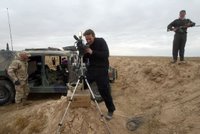
Kevin Sites Multi-Tasking as a Sojo ( solo journalist) Photo Kevin Sites
Lost Mojo @ Yahoo? The boys in the garage who created Yahoo still have their edge, we thought last Fall while following Sites' multimedia reports. How daring and bold. Yahoo is positioning themselves as pathfinders again, reviving the company's early mojo to create something new, daring and different.
Today's New York Times reports that the company has now decided to scale back their plan to produce original cross-media programming generated by pros. Yahoo now says it will concentrate instead on content acquired from other media companies or generated by users instead. And why not? User generated content is free.
Would 60 Minutes have survived at Yahoo as a start-up?
Not.
Original Content Placed on Back Burner by YahooWith Google nipping at his heels, Yahoo Chief Terry S. Siemel has apparently clashed with Lloyd Braun, the head of Yahoo Media, as Braun tried to implement this new business model, " to make the Internet look like television," writes the New York Times. Reports of Braun's demise at Yahoo have been greatly exaggerated says Lloyd Braun who seems to have changed the tone of the tune he was previously singing.
See previous post on birds who sing too much The NYT quotes a more chastened Braun now saying, " Original content is the salt and pepper on the meal. It is certainly not the engine driving us. "
Although the public will ultimately suffer as Yahoo decides to dumb down, the company's shareholders will benefit from the projected increase in revenue from advertising. Yahoo says users stay in Yahoo's space longer while creating and sharing their content in sites such as Flickr, devoted to photo-sharing. The longer the company is able to keep users in Yahoo space, the more advertising Yahoo is able to sell.
Yahoo says although it is placing plans to produce original media-rich programming on the back burner for now, it will not cancel "Kevin Sites in the Hot Zone. " Showered with kudos and highly admired by media pros, " Kevin Sites In the Hot Zone" had only 791,000 users in January, what some might say is a respectable audience but
" marginal for Yahoo with more than 400 million users, " writes Saul Hansell.
Today's New York Times quotes Lloyd Braun,
"I now get excited about under-generated content the way I used to get excited about thinking about what television shows would work,"he said.
Mr. Braun insisted that Yahoo would would not abandon its efforts to have original material, but he said it would embark on only a handful of new ventures this year, not the dozens he had been promising last year.
-The New York Times, Saul Hansell, March 2, 2006
How Much longer will Hot Zone Continue?The header for Kevin Sites In the Hot Zone reads: "One Man. One Year. A World of Conflict."
Has Sites and his " Hot Zone" become a little too hot...hot...hot for Yahoo to handle? Will they pull the plug soon? Because this reporter with a soul and passion doesn't report " Bang Bang " stories which consist of familiar stories on the Boys With Big Toys in Iraq. Google his name and check out what conservative bloggers are saying about Kevin Sites. But it will certainly be no surprise for Sites if he wakes up one morning to find that the plug has been pulled.
In April of 2003 Susan Mernit reported at USC's
Online Journalism Review, on "CNN's decision to force war correspondent Kevin Sites to stop posting items to the popular blog he created while on assignment in northern Iraq," which touched off "an ongoing debate on blogging as a legitimate form of journalism."
Will Kevin's contract be renewed? I hope so.
Or maybe not, for Kevin's sake. He must be exhausted.
And Kevin, if you are reading this post, please do take care. You are covering a beat where PTS is as endemic for journalists as bullets, buzzards and death. Do stop to consider the sad story of Keith Carter , the South African photojournalist featured in the new short doc, screened at the IDA's DocuNYC on Saturday.
Bon Courage.
( Full disclosure: Although I am a big Kevin Sites fan I did not lift the title for my cross-media project on malaria called "Fever Zone" from him. I chose it two years ago.)
-Stephenie Hollyman, New York City
 Kenny Irby, Director of the Visual Journalism Group at The Poynter Instutue. Photo Ben Russell/NewsU
Kenny Irby, Director of the Visual Journalism Group at The Poynter Instutue. Photo Ben Russell/NewsU 
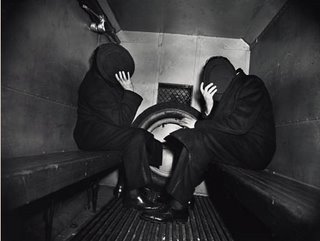
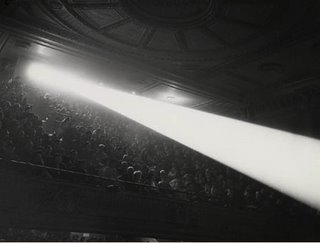 In my previous post I briefly mentioned
In my previous post I briefly mentioned 
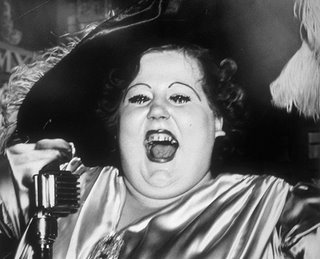


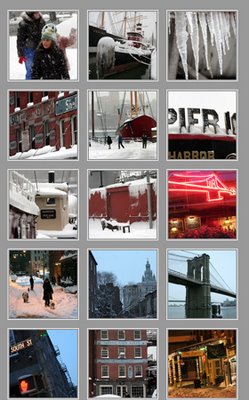

 NASA Photo
NASA Photo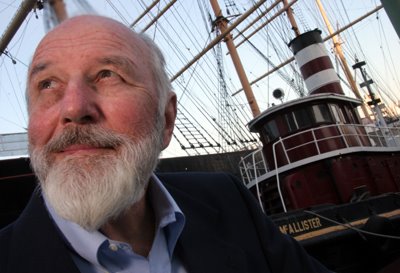 Photograph Copyright Stephenie Hollyman 2006
Photograph Copyright Stephenie Hollyman 2006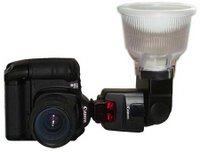 This
This 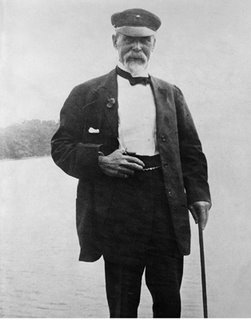 James McAllister who arrived from Ireland in 1864 and founded this company with a single sail lighter. Take a look at this photo of James McAllister and decide for yourself.
James McAllister who arrived from Ireland in 1864 and founded this company with a single sail lighter. Take a look at this photo of James McAllister and decide for yourself.  Photograph Stephenie Hollyman Copyright 2006
Photograph Stephenie Hollyman Copyright 2006
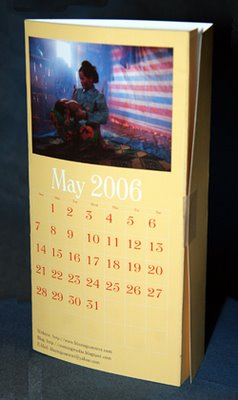

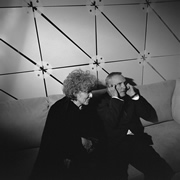 Photo Copyright Larry Fink 2006
Photo Copyright Larry Fink 2006 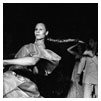 Photograph Copyright Larry Fink All Rights Reserved 2006
Photograph Copyright Larry Fink All Rights Reserved 2006 Photo Larry Fink Copyright 2006
Photo Larry Fink Copyright 2006
